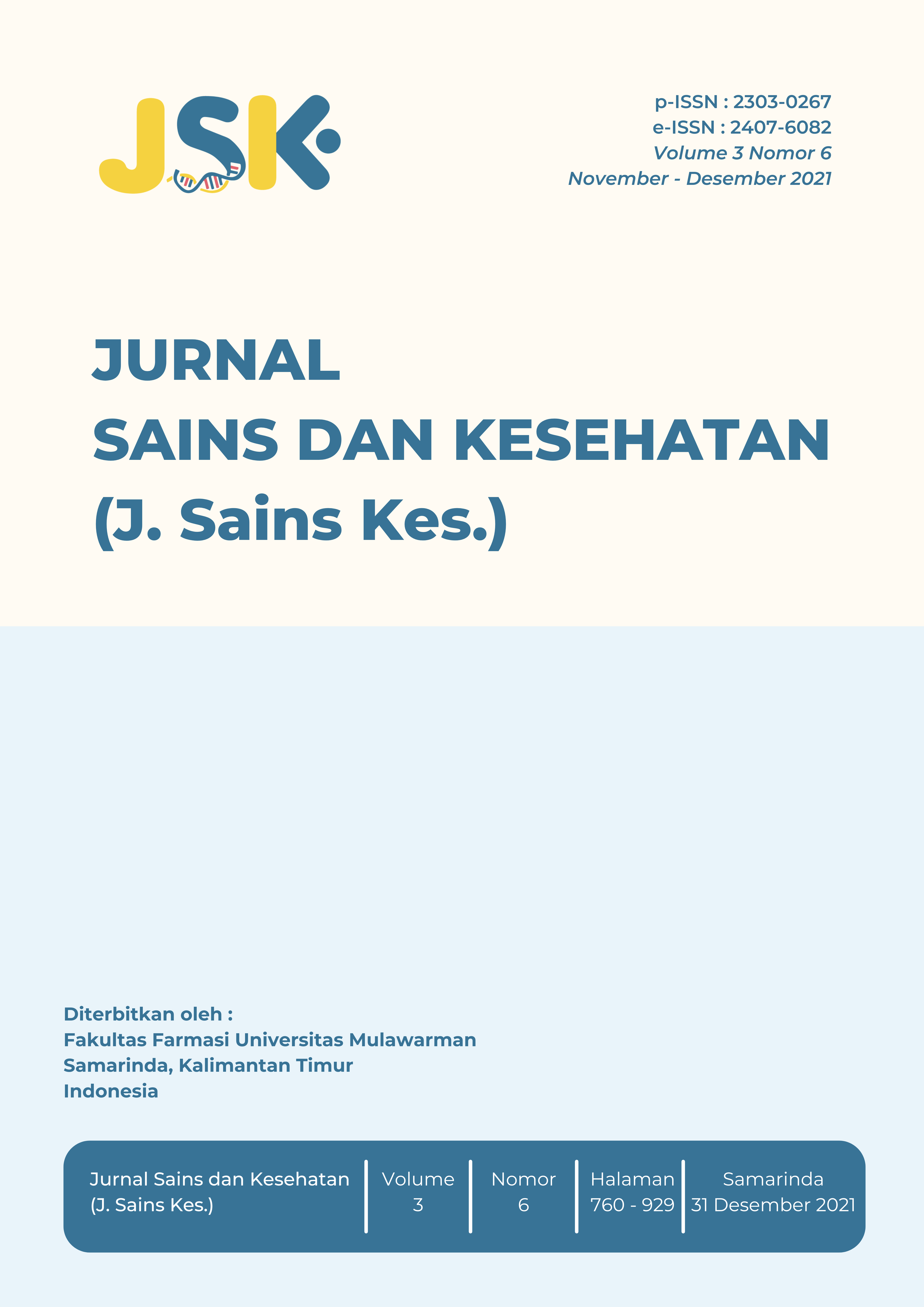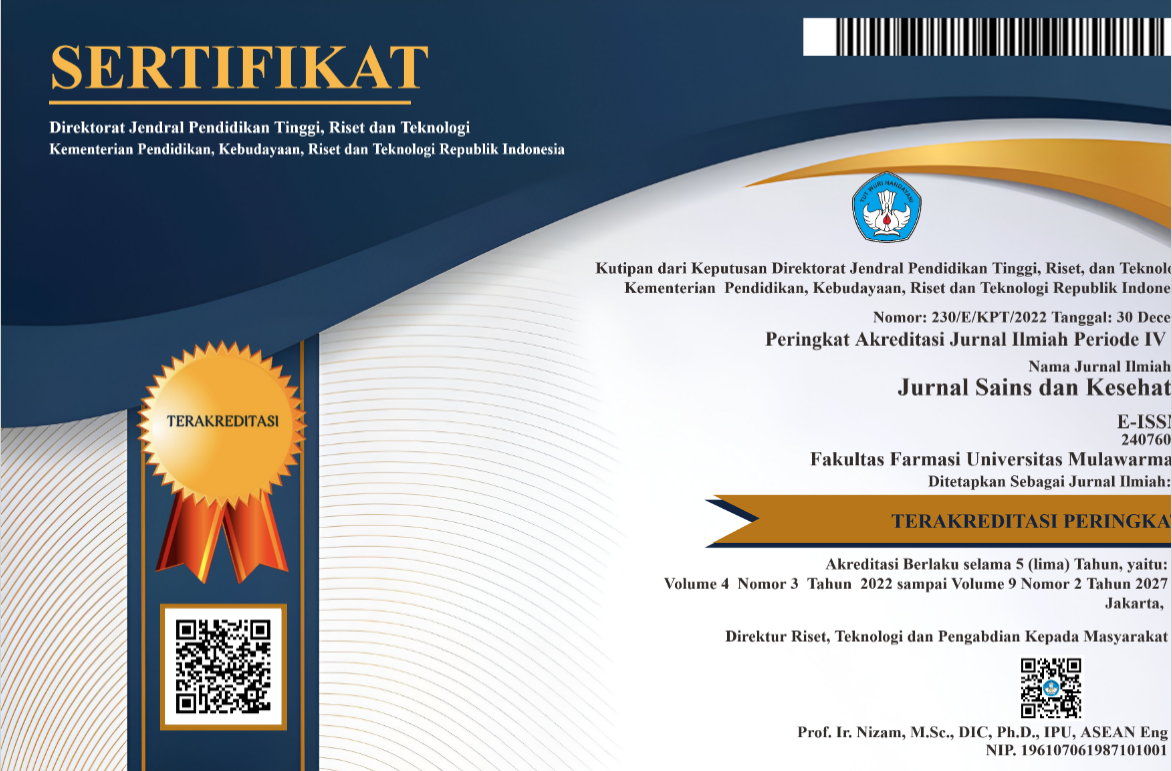Review: Pengaruh Konsentrasi Garam Terhadap Produk Fermentasi Sayuran
Keywords:
Fermentation, kimchi, sauerkraut, pickleAbstract
References
[1] D. A. A. Yuarini, I. K. Satriawan, and I. D. P. O. Suardi, 2015. “Strategi Peningkatan Kualitas Produk Sayuran Segar Organik pada CV. Golden Leaf Farm Bali”, J. Manaj. Agribisnis, vol. 3, no. 2, pp. 93–109.
[2] A. B. F. Azka, M. T. Santriadi, and M. N. Kholis, “Pengaruh Konsentrasi Garam dan Lama Fermentasi terhadap Sifat Kimia dan Organoleptik Kimchi”, Agroindustrial Technol. J., vol. 02, no. 01, pp. 91–97, 2018, doi: http://dx.doi.org/10.21111/atj.v2i1.2818.
[3] A. Nudayanto and E. Zubaidah, “Isolasi Bakteri Asam Laktat Penghasil Eksopolisakarida dari Kimchi”, J. Pangan dan Argoindustri, vol. 3, no. 2, pp. 743–748, 2015.
[4] R. Hayati, R. Fadhil, and R. Agustina, “Analisis Kualitas Sauerkraut (Asinan Jerman) dari Kol (Brassica oleracea) Selama Fermentasi dengan Variasi Konsentrasi Garam”, Rona Tek. Pertan., vol. 10, no. 2, pp. 18–34, 2017, doi: 10.17969/rtp.v10i2.8937.
[5] S. Susilowati, S. Laia, and H. Purnomo, “The Effect of Salt Concentration and Fermentation Time on pH Value, Total Acidity and Microbial Characteristic of Pickled Ginger (Zingiber officinale Rosc.)”, Int. Food Res. J., vol. 25, no. 6, pp. 2301–2306, 2018.
[6] L. D. D. Arini, “Pemanfaatan Bakteri Baik dalam Pembuatan Makanan”, Biomedika, vol. 10, no. 1, pp. 1–11, 2017.
[7] Setiawan, N. Yuliana, and S. Setyani, “Pengaruh Konsentrasi Garam Terhadap Warna, Total Asam dan Total Bakteri Asam Laktat Pikel Ubi Jalar Ungu (Ipomoea Batatas var Ayamurasaki) Selama Fermentasi”, J. Teknol. Ind. dan Has. Pertan., vol. 18, no. 1, pp. 42–51, 2013.
[8] R. Saskia, U. Pato, and Rahmayuni, “Pengaruh Konsentrasi Garam Terhadap Kadar HCN dan Penilaian Sensori Pikel Rebung”, Jom FAPERTA, vol. 4, no. 1, pp. 1–11, 2017.
[9] N. M. I. H. Arihantana and D. P. K. Partiwi, “Isolasi dan Identifikasi Bakteri Asam Laktat Indigenous dari Sawi Asin Isolation and Identification of Lactic Acid Bacteria From " Sawi Asin " (Fermented Vegetable)”, Media Ilm. Teknol. Pangan, vol. 2, no. 1, pp. 41–50, 2015.
[10] J.-H. Lee et al., “Analysis of Microbiological Contamination in Kimchi and Its Ingredients”, J. Food Hyg. Saf., vol. 33, no. 2, pp. 94–101, 2018, doi: 10.13103/jfhs.2018.33.2.94.
[11] H.-L. Jang et al., “Changes in Nutritional Composition and Physicochemical Properties of Mustard Leaf (Brassica juncea) Kimchi during Fermentation”, Korean J. Food Nutr., vol. 29, no. 5, pp. 706–715, 2016, doi: 10.9799/ksfan.2016.29.5.706.
[12] Codex Alimentarius Internasional Food Standar. Standar for Kimchi, 2017.
[13] Yusmarini, U. Pato, V. S. Johan, S. Fitriani, Rahmayuni, and P. F. Zelviani, “Karakteristik Asinan Kubis yang Dibuat dengan Penambahan Isolat Lactobacillus plantarum 1”, J. Teknol. Pangan, vol. 13, no. 1, pp. 39–47, 2019, doi: 10.33005/jtp.v13i1.1542.
[14] R. Fevria and I. Hartanto, “Isolation and Characterization of Lactic Acid Bacteria (Lactobacillus sp) from Sauerkraut with the addition of Cayenne Pepper”, Bioscience, vol. 3, no. 2, p. 169, 2019, doi: 10.24036/0201932106355-0-00.
[15] Badan Standar Nasional, “Sauerkraut Dalam Kemasan SNI 01.2600.1992”, 1992.
[16] Kenya Standar, “Pickled Fruits and Vegetables - Specification. DKS 2687: 2016”, 2016.
[17] C. Lestari and I. Suhaidi, “Pengaruh konsentrasi larutan garam dan suhu fermentasi terhadap mutu kimchi lobak”, J. Rekayasa Pangan dan Pertan., vol. 5, no. 1, pp. 34–41, 2017.
[18] A. C. Iwansyah, L. G. Patiya, and H. Hervelly, “Pengaruh Konsentrasi Natrium Klorida dan Lama Fermentasi pada Mutu Fisikokimia, Mikrobiologi, dan Sensori Kimchi Rebung”, Ind. J. Teknol. dan Manaj. Agroindustri, vol. 8, no. 3, pp. 227–237, 2019, doi: 10.21776/ub.industria.2019.008.03.7.
[19] K. A. Buckle, R. A. Edwards, G. H. Fleet, and M. Wootton, Ilmu Pangan. Terjemahan H. Purnomo dan Adiano. UI Press - Jakarta, 2009.
[20] F. Kusnandar, Kimia Pangan: Komponen Makro. Dian Rakyat, 2011.
[21] R. Nakdiyani and S. C. Batubara, “Mutu Sauerkraut Kubis Dan Wortel Grade Rendah Dengan Konsentrasi Garam Yang Berbeda”, J. Teknol. Pangan dan Kesehat., vol. 1, no. 2, pp. 101–112, 2019.
[22] A. Menconi et al., “Identification and Characterization of Lactic Acid Bacteria in a Commercial Probiotic Culture”, Biosci. Microbiota, Food Heal., vol. 33, no. 2, pp. 25–30, 2014.
[23] C. Utama and A. Mulyanto, “Potensi Limbah Pasar Sayur Menjadi Starter Fermentasi”, J. Kesehat., vol. 2, no. 1, pp. 6–13, 2009.
[24] A. Tabatabaei-Yazdi, B. Alizadeh-Behbahani, and A. Mortazavi, “Effect of Temperature and Salt Concentration on Microbial Changes During Tarkhineh Fermentation”, Sci. J. Biol. Sci., vol. 2, no. 1, pp. 8–16, 2013.
[25] C. Ibourahema, R. D. Dauphin, D. Jacqueline, and P. Thonart, “Characterization of Lactic Acid Bacteria Isolated from Poultry Farms in Senegal”, African J. Biotechnol., vol. 7, no. 12, pp. 2006–2012, 2008.
[26] D. L. Simbolon, Yusmarini, and A. Ali, “Viabilitas Lactobacillus plantarum 1 yang Diisolasi Dari Industri Pengolahan Pati Sagu Terhadap Garam Empedu”, Jom Faperta, vol. 3, no. 1, pp. 1–6, 2016.
[27] F. Breidt, R. F. M. Feeters, I. P. Diaz, and C. H. Lee., Fermented Vegetables. Food Microbiology: Fundamentals and Frontiers, 4th Ed. ASM Press, Washington, 2013.
[28] Kusumaningrum, Yusmarini, and A. Ali, “Isolasi Dan Identifikasi Bakteri Asam Laktat Amilolitik dari Industri Pengolahan Pati Sagu”, Jom FAPERTA, vol. 2, no. 1, 2015.
[29] Y. Yusmarini, U. Pato, V. S. Johan, A. Ali, and K. Kusumaningrum, “Karakterisasi Bakteri Asam Laktat Amilolitik dari Industri Pengolahan Pati Sagu”, Agritech, vol. 37, no. 1, p. 96, 2017, doi: 10.22146/agritech.17014.
[30] B. Yolanda and V. I. Meitiniarti, “Isolasi Bakteri Asam Laktat dari Kimchi dan Kemampuannya Menghasilkan Zat Anti Bakteri”, Scr. Biol., vol. 4, no. 3, p. 165, 2017, doi: 10.20884/1.sb.2017.4.3.447.
[31] C. N. Halim and E. Zubaidah, “Studi Kemampuan Probiotik Isolat Bakteri Asam Laktat Penghasil Eksopolisakarida Tinggi Asal Sawi Asin (Brassica( Brassica juncea )”, J. Pangan dan Argoindustri, vol. 1, no. 1, pp. 129–137, 2013.
[32] N. Udomsil, S. Rodtong, S. Tanasupawat, and J. Yongsawatdigul, “Proteinase-Producing Halophilic Lactic Acid Bacteria Isolated from Fish Sauce Fermentation and Their Ability to Produce Volatile Compounds”, Int. J. Food Microbiol., vol. 141, no. 3, pp. 186–194, 2010, doi: 10.1016/j.ijfoodmicro.2010.05.016.
[33] L. S. F. Ahmadsah, S. G. Min, S. K. Han, Y. Hong, and H. Y. Kim, “Effect of Low Salt Concentrations on Microbial Changes During Kimchi Fermentation Monitored by PCR-DGGE and Their Sensory Acceptance”, J. Microbiol. Biotechnol., vol. 25, no. 12, pp. 2049–2057, 2015, doi: 10.4014/jmb.1506.06058.
Downloads
Published
Issue
Section
Deprecated: json_decode(): Passing null to parameter #1 ($json) of type string is deprecated in /home/jskff/public_html/plugins/generic/citations/CitationsPlugin.php on line 68
How to Cite
Most read articles by the same author(s)
- Gugup Prasetiyo, Novriyanti Lubis, Effan Cahyati Junaedi, Review: Kandungan Kalium dan Natrium dalam Air Kelapa dari Tiga Varietas Sebagai Minuman Isotonik Alami , Jurnal Sains dan Kesehatan: Vol. 3 No. 4 (2021): J. Sains Kes.
- Novriyanti Lubis, Sofi Sofiyani, Effan Cahyati Junaedi, Penentuan Kualitas Madu Ditinjau dari Kadar Sukrosa dengan Metode Luff Schoorl , Jurnal Sains dan Kesehatan: Vol. 4 No. 3 (2022): J. Sains Kes.
- Tiara Sri Yulviani, Effan Cahyati Junaedi, Novriyanti Lubis, Review: Potensi Nitrogen Cair dalam Mempertahankan Kualitas Vitamin C dan Kadar Air pada Buah Beku , Jurnal Sains dan Kesehatan: Vol. 4 No. 5 (2022): J. Sains Kes.
- Novriyanti Lubis, Doni Anshar Nuari, Shendi Suryana, Vingki Pratiwi Ganenggara, Rahmayanti Rahmayanti, Pengaruh Iradiasi Sinar Gamma Dosis 7 Kgy Terhadap Kualitas Mikrobiologi Biskuit Pati Umbi Taka (Tacca leontopetaloides (L.) Kuntze) , Jurnal Sains dan Kesehatan: Vol. 3 No. 4 (2021): J. Sains Kes.
Similar Articles
- Niken Maharani Putri, Resti Fevria, Linda Advinda, Moralita Chatri, Total Bakteri Asam Laktat (BAL) dari Sauerkraut Kubis Singgalang (Brassica oleracea var. capitata L.) dengan Konsentrasi Garam yang Berbeda , Jurnal Sains dan Kesehatan: Vol. 5 No. SE-1 (2023): Spesial Edition J. Sains Kes.
- Desi Purwaningsih, Destik Wulandari, Uji Aktivitas Antibakteri Hasil Fermentasi Bakteri Endofit Umbi Talas (Colocasia esculenta L) terhadap Bakteri Pseudomonas aeruginosa , Jurnal Sains dan Kesehatan: Vol. 3 No. 5 (2021): J. Sains Kes.
You may also start an advanced similarity search for this article.




